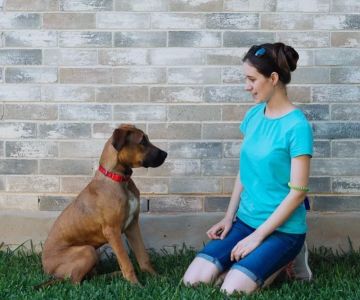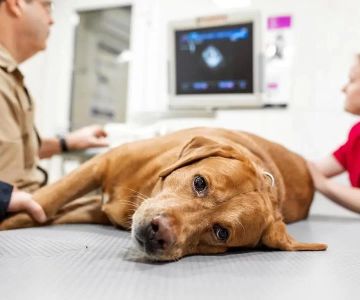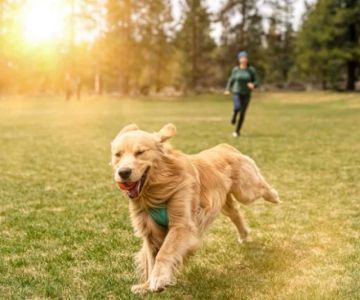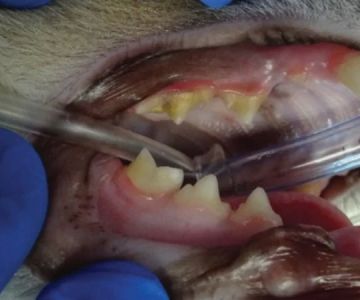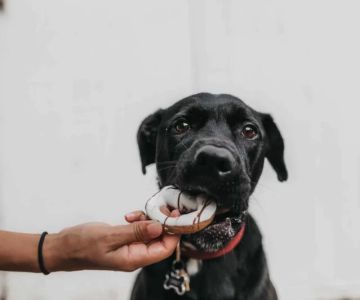- 1-Understanding-Why-Dogs-Struggle-With-Car-Rides-#understanding-why-struggle
- 2-Preparing-Your-Dog-For-Travel-#preparing-for-travel
- 3-Step-by-Step-Training-Techniques-#training-techniques
- 4-Common-Challenges-and-Solutions-#challenges-solutions
- 5-Real-Life-Cases-of-Dogs-Calming-Down-in-Cars-#real-life-cases
- 6-How-Hidden-Brook-Veterinary-Can-Help-#hidden-brook-help
1. Understanding Why Dogs Struggle With Car Rides
For many dog owners, car trips are stressful events. Your dog may become overly excited, anxious, or even motion-sick. Understanding why dogs struggle with car rides is the first step toward addressing the issue and ensuring peaceful travel.
1.1 The Root Causes of Car Anxiety in Dogs
Dogs can develop anxiety during car rides due to a number of factors. For some, it’s the lack of control—cars are fast-moving, noisy environments where dogs are unable to predict their surroundings. Others may suffer from motion sickness, while some may associate car rides with visits to the vet or unpleasant experiences.
1.2 The Importance of Early Training
Early exposure and proper training can make a huge difference. Like any behavior, car anxiety can be mitigated through consistent training and gradual desensitization.
2. Preparing Your Dog for Travel
Before you begin training, it's crucial to ensure your dog is properly prepared for the car ride. Here are some steps to take before hitting the road.
2.1 Choose the Right Travel Equipment
Having the right travel gear for your dog is essential. From dog seat belts to travel crates and comfort cushions, having the proper equipment ensures your dog is both safe and comfortable. This can make the experience less stressful for both you and your pet.
2.2 Start with Short, Positive Rides
Start by taking your dog on short trips. This could be a quick drive around the block or to the local park. The goal is to get your dog used to being in the car without overwhelming them with a long, stressful journey right away.
3. Step-by-Step Training Techniques
Training your dog to be calm during car rides involves a series of structured steps. These techniques can help alleviate anxiety and make travel a more enjoyable experience for your dog.
3.1 Create Positive Associations with the Car
Begin by making the car a positive space for your dog. Place treats, favorite toys, or their bed inside the car to encourage them to enter willingly. Spend time with them in the car while the engine is off, letting them get comfortable with the space.
3.2 Gradually Increase Ride Time
Once your dog is comfortable being in the car with the engine off, take short drives while gradually increasing the duration. Keep the ride calm and positive, rewarding your dog for staying relaxed. Avoid taking your dog on long trips until they have successfully adapted to shorter drives.
3.3 Use Calming Aids and Products
There are several calming products that can help reduce anxiety, such as anxiety wraps, calming collars, and pheromone sprays. These tools can help your dog feel more at ease during car rides. Always consult with your veterinarian before introducing any new products.
4. Common Challenges and Solutions
Even with proper training, some dogs may continue to struggle with car rides. Here are some common challenges and their solutions.
4.1 Motion Sickness in Dogs
Motion sickness is a common issue for dogs, especially puppies. If your dog vomits or drools excessively during rides, they may be experiencing car sickness. Try using a crate to secure your dog, as this can help reduce the feeling of movement. You can also consult with a vet for medication to help with nausea during travel.
4.2 Excessive Barking and Whining
Some dogs bark or whine in the car due to anxiety. To address this, avoid rewarding the behavior with attention. Stay calm, and only reward your dog when they are quiet. Gradual desensitization and positive reinforcement will help over time.
4.3 Overexcitement During Rides
If your dog becomes overly excited during car rides, training them to stay calm can be a challenge. Teaching basic commands like “sit,” “stay,” and “quiet” in the car can help manage their excitement. Consistency and patience are key here.
5. Real-Life Cases of Dogs Calming Down in Cars
Training dogs to be calm during car rides can take time, but many owners have successfully overcome their dog's car anxiety. Here are a few real-life cases.
5.1 Case Example: Daisy the Golden Retriever
Daisy, a 2-year-old Golden Retriever, had severe anxiety every time she got in the car. Her owner started with short 5-minute trips to the park and used calming sprays. Over a few weeks, Daisy became more relaxed in the car, and her trips to the vet no longer caused her distress. Her owner credits consistent positive reinforcement as the key to Daisy's progress.
5.2 Case Example: Max the Border Collie
Max, a Border Collie with a history of car sickness, was frequently nauseous during rides. His owner consulted with their vet, who recommended a medication for nausea. Over time, Max learned to associate car rides with positive experiences, and the medication helped him travel without vomiting.
6. How Hidden Brook Veterinary Can Help
At Hidden Brook Veterinary, we understand that every dog is unique. Whether your dog struggles with motion sickness, anxiety, or excitement during car rides, we are here to help. Our team of veterinarians can provide personalized advice and recommend the best calming products or treatments. If you're looking for solutions tailored to your dog’s needs, consider reaching out to us for professional support.
Additionally, we offer a range of products designed to make car rides more comfortable for your pet, from calming aids to travel gear. Visit Hidden Brook Veterinary for more information and resources to help your dog stay calm during every car ride.



